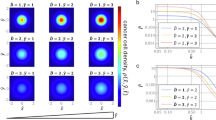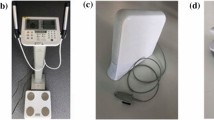Abstract
Market bubbles emerge when asset prices are driven unsustainably higher than asset values, and shifts in belief burst them. We demonstrate an analogous phenomenon in the case of biomedical knowledge, when promising research receives inflated attention. We introduce a diffusion index that quantifies whether research areas have been amplified within social and scientific bubbles, or have diffused and become evaluated more broadly. We illustrate the utility of our diffusion approach in tracking the trajectories of cardiac stem cell research (a bubble that collapsed) and cancer immunotherapy (which showed sustained growth). We then trace the diffusion of 28,504 subfields in biomedicine comprising nearly 1.9 M papers and more than 80 M citations to demonstrate that limited diffusion of biomedical knowledge anticipates abrupt decreases in popularity. Our analysis emphasizes that restricted diffusion, implying a socio-epistemic bubble, leads to dramatic collapses in relevance and attention accorded to scientific knowledge.
This is a preview of subscription content, access via your institution
Access options
Access Nature and 54 other Nature Portfolio journals
Get Nature+, our best-value online-access subscription
27,99 € / 30 days
cancel any time
Subscribe to this journal
Receive 12 digital issues and online access to articles
118,99 € per year
only 9,92 € per issue
Buy this article
- Purchase on SpringerLink
- Instant access to full article PDF
Prices may be subject to local taxes which are calculated during checkout




Similar content being viewed by others
Data availability
This work uses the PubMed Knowledge Graph26 (http://er.tacc.utexas.edu/datasets/ped) and the replication data from ref. 31 (https://www.openicpsr.org/openicpsr/project/116188/version/V1/view;jsessionid=EA1E1E5A6DAB42737EE54A5F5DD4B069). Source data are provided with this paper.
Code availability
The data and code used for the figures and tables are available in GitHub55.
References
Arthur, W. B. Complexity in economic and financial markets. Complexity 1, 20–25 (1995).
Harras, G. & Sornette, D. How to grow a bubble: a model of myopic adapting agents. J. Econ. Behav. Organ. 80, 137–152 (2011).
Goldman, A. I. & Shaked, M. An economic model of scientific activity and truth acquisition. Philos. Stud. 63, 31–55 (1991).
Pedersen, D. B. & Hendricks, V. F. Science bubbles. Philos. Technol. 27, 503–518 (2014).
Evans, J. P., Meslin, E. M., Marteau, T. M. & Caulfield, T. Genomics. Deflating the genomic bubble. Science 331, 861–862 (2011).
Fortunato, S. et al. Science of science. Science 359, eaao0185 (2018).
Partha, D. & David, P. A. Toward a new economics of science. Res. Policy 23, 487–521 (1994).
Small, H., Boyack, K. W. & Klavans, R. Identifying emerging topics in science and technology. Res. Policy 43, 1450–1467 (2014).
Funk, R. J. & Owen-Smith, J. A dynamic network measure of technological change. Manage. Sci. 63, 791–817 (2016).
Klavans, R., Boyack, K. W. & Murdick, D. A. A novel approach to predicting exceptional growth in research. PLoS ONE 15, e0239177 (2020).
Weis, J. W. & Jacobson, J. M. Learning on knowledge graph dynamics provides an early warning of impactful research. Nat. Biotechnol. 39, 1300–1307 (2021).
Lin, Y., Evans, J. A. & Wu, L. New directions in science emerge from disconnection and discord. J. Informetr. 16, 101234 (2022).
Petersen, A. M., Pan, R. K., Pammolli, F. & Fortunato, S. Methods to account for citation inflation in research evaluation. Res. Policy 48, 1855–1865 (2019).
Hutchins, B. I., Yuan, X., Anderson, J. M. & Santangelo, G. M. Relative Citation Ratio (RCR): a new metric that uses citation rates to measure influence at the article level. PLoS Biol. 14, e1002541 (2016).
Taylor, M. & Heath, B. Years after Brigham–Harvard scandal, U.S. pours millions into tainted stem-cell field. Reuters (21 June 2022).
Anversa, P., Kajstura, J., Leri, A. & Bolli, R. Life and death of cardiac stem cells: a paradigm shift in cardiac biology. Circulation 113, 1451–1463 (2006).
2009 Current Fiscal Year Report: Board of Scientific Counselors, National Institute on Aging. The Federal Advisory Committee Act (FACA) Database (Department of Health and Human Services, 2009); https://www.facadatabase.gov/FACA/apex/FACACommitteeLevelReportAsPDF?id=a10t0000001h2ObAAI
Murry, C. E. et al. Haematopoietic stem cells do not transdifferentiate into cardiac myocytes in myocardial infarcts. Nature 428, 664–668 (2004).
Vrotsos, L. W. Harvard Medical School requests retractions for former professor’s research. The Harvard Crimson (16 October 2018).
Oransky, I. & Marcus, A. Harvard and the Brigham call for more than 30 retractions of cardiac stem cell research. STAT News (14 October 2018).
Davis, D. R. Cardiac stem cells in the post-Anversa era. Eur. Heart J. 40, 1039–1041 (2019).
Osafune, K. et al. Marked differences in differentiation propensity among human embryonic stem cell lines. Nat. Biotechnol. 26, 313–315 (2008).
Harris, R. Rigor Mortis: How Sloppy Science Creates Worthless Cures, Crushes Hope, and Wastes Billions (Basic Books, 2017).
Neimark, J. Line of attack. Science 347, 938–940 (2015).
Hughes, P., Marshall, D., Reid, Y., Parkes, H. & Gelber, C. The costs of using unauthenticated, over-passaged cell lines: how much more data do we need? Biotechniques 43, 575–586 (2007).
Xu, J. et al. Building a PubMed knowledge graph. Sci. Data 7, 205 (2020).
Teplitskiy, M., Acuna, D., Elamrani-Raoult, A., Körding, K. & Evans, J. The sociology of scientific validity: how professional networks shape judgement in peer review. Res. Policy 47, 1825–1841 (2018).
Belikov, A. V., Rzhetsky, A. & Evans, J. Prediction of robust scientific facts from literature. Nat. Mach. Intell. 4, 445–454 (2022).
Quaini, F. et al. Chimerism of the transplanted heart. N. Engl. J. Med. 346, 5–15 (2002).
Freeman, G. J. et al. Engagement of the PD-1 immunoinhibitory receptor by a novel B7 family member leads to negative regulation of lymphocyte activation. J. Exp. Med. 192, 1027–1034 (2000).
Azoulay, P., Fons-Rosen, C. & Zivin, J. S. G. Does science advance one funeral at a time? Am. Econ. Rev. 109, 2889–2920 (2019).
Le, Q. & Mikolov, T. Distributed representations of sentences and documents. In Proc. 31st International Conference on Machine Learning (eds Xing, E. P. & Jebara, T.) 1188–1196 (PMLR, 2014).
Laflamme, M. A. & Murry, C. E. Regenerating the heart. Nat. Biotechnol. 23, 845–856 (2005).
van Berlo, J. H. et al. C-kit+ cells minimally contribute cardiomyocytes to the heart. Nature 509, 337–341 (2014).
Chien, K. R. et al. Regenerating the field of cardiovascular cell therapy. Nat. Biotechnol. 37, 232–237 (2019).
Mellman, I., Coukos, G. & Dranoff, G. Cancer immunotherapy comes of age. Nature 480, 480–489 (2011).
Finck, A., Gill, S. I. & June, C. H. Cancer immunotherapy comes of age and looks for maturity. Nat. Commun. 11, 3325 (2020).
Smyth, M. J. & Teng, M. W. 2018 Nobel Prize in physiology or medicine. Clin. Transl. Immunol. 7, e1041 (2018).
Lin, J. & Wilbur, W. J. PubMed related articles: a probabilistic topic-based model for content similarity. BMC Bioinformatics 8, 423 (2007).
Azoulay, P., Bonatti, A. & Krieger, J. L. The career effects of scandal: evidence from scientific retractions. Res. Policy 46, 1552–1569 (2017).
Myers, K. The elasticity of science. Am. Econ. J. Appl. Econ. 12, 103–134 (2020).
Reschke, B. P., Azoulay, P. & Stuart, T. E. Status spillovers: the effect of status-conferring prizes on the allocation of attention. Adm. Sci. Q. 63, 819–847 (2018).
Danchev, V., Rzhetsky, A. & Evans, J. A. Centralized scientific communities are less likely to generate replicable results. eLife 8, e43094 (2019).
Bourdieu, P. The specificity of the scientific field and the social conditions of the progress of reason. Soc. Sci. Inf. 14, 19–47 (1975).
Kim, J., Wang, Z., Shi, H., Ling, H.-K. & Evans, J. Individual misinformation tagging reinforces echo chambers; collective tagging does not. Preprint at https://arxiv.org/abs/2311.11282 (2023).
Mikolov, T., Sutskever, I., Chen, K., Corrado, G. S. & Dean, J. Distributed representations of words and phrases and their compositionality. Adv. Neural Inf. Process. Syst. 26, 3111–3119 (2013).
Kozlowski, A. C., Taddy, M. & Evans, J. A. The geometry of culture: analyzing the meanings of class through word embeddings. Am. Sociol. Rev. 84, 905–949 (2019).
Garg, N., Schiebinger, L., Jurafsky, D. & Zou, J. Word embeddings quantify 100 years of gender and ethnic stereotypes. Proc. Natl Acad. Sci. USA 115, E3635–E3644 (2018).
Perozzi, B., Al-Rfou, R. & Skiena, S. DeepWalk: online learning of social representations. In Proc. 20th ACM SIGKDD International Conference on Knowledge Discovery and Data Mining 701–710 (Association for Computing Machinery, 2014).
Grover, A. & Leskovec, J. node2vec: scalable feature learning for networks. KDD 2016, 855–864 (2016).
Rehurek, R. & Sojka, P. Software framework for topic modelling with large corpora. In Proc. LREC 2010 Workshop on New Challenges for NLP Frameworks 45–50 (Univ. of Malta, 2010).
Foster, J. G., Rzhetsky, A. & Evans, J. A. Tradition and innovation in scientists’ research strategies. Am. Sociol. Rev. 80, 875–908 (2015).
Azoulay, P., Furman, J. L. & Murray, F. Retractions. Rev. Econ. Stat. 97, 1118–1136 (2015).
de Solla Price, D. J. Little Science, Big Science—and Beyond (Columbia Univ. Press, 1963).
Kang, D. Limited diffusion of scientific knowledge forecasts collapse. GitHub https://github.com/Donghyun-Kang-Soc/limited_diffusion (2024).
Acknowledgements
We acknowledge funding from the Fetzer Franklin Fund in association with the 2019 MetaScience Symposium (R.S.D., J.A.E., D.K.), the Air Force Office of Scientific Research (AFOSR: FA9550-19-1-0354 and FA9550-15-1-0162) (J.A.E., D.K.) and the National Science Foundation (NSF: 1829366 and 1800956) (J.A.E., D.K.). The funders have/had no role in study design, data collection and analysis, decision to publish or preparation of the manuscript. This work was completed in part with resources provided by the University of Chicago’s Research Computing Center. We also appreciate the support from J. Xu and Y. Ding in facilitating access to PubMed Knowledge Graph.
Author information
Authors and Affiliations
Contributions
D.K., R.S.D., J.R. and J.A.E. conceptualized the project. D.K. and J.A.E. developed the methodology. D.K. performed visualization. R.S.D. and J.A.E. acquired funding. D.K. and J.A.E. wrote the original draft. D.K., R.S.D., J.R. and J.A.E. reviewed and edited the manuscript.
Corresponding author
Ethics declarations
Competing interests
The authors declare no competing interests.
Peer review
Peer review information
Nature Human Behaviour thanks the anonymous reviewers for their contribution to the peer review of this work. Peer reviewer reports are available.
Additional information
Publisher’s note Springer Nature remains neutral with regard to jurisdictional claims in published maps and institutional affiliations.
Extended data
Extended Data Fig. 1 Complementary 2D heatmaps for the upper panels of Fig. 1.
Values are derived from the kernel density estimations graphed in Fig. 1 for the distribution of diffusion indices in scientific (panels a and b) and social space (panels c and d), respectively.
Extended Data Fig. 2 Distribution of zi,t from 28,504 subfields.
We set the cutoff value for bubble bursting to −2.64, the bottom 0.5% percentile. The range of \({z}_{i,t}\) is [−5.2, 5.52].
Extended Data Fig. 3 Six examples of subfields.
Annual citation counts aggregated at the subfield level, using forward citations to related publications. Top panels (a, b, c): Subfields represented by three PMIDs, illustrating cases without bubble bursting events. Bottom panels (d, e, f): Subfields that experienced bubble bursts, corresponding to cutoffs closest to the 0.5%, 0.25%, and 0.1% thresholds of the \({z}_{i,t}\) value.
Supplementary information
Supplementary Information
Supplementary Tables 1.1–1.3, 3.1–3.11 and 4.1–4.4; Figs. 2.1, 2.2, 3.1–3.3 and 4.1–4.4; and Discussion.
Source data
Source Data Fig. 1
Source data.
Source Data Fig. 2
Source data.
Source Data Fig. 3
Source data.
Source Data Fig. 4
Source data.
Source Data Extended Data Fig. 1
Source data.
Source Data Extended Data Fig. 2
Source data.
Source Data Extended Data Fig. 3
Source data.
Source Data Extended Data Table 1
Source data.
Source Data Extended Data Table 2
Source data.
Rights and permissions
Springer Nature or its licensor (e.g. a society or other partner) holds exclusive rights to this article under a publishing agreement with the author(s) or other rightsholder(s); author self-archiving of the accepted manuscript version of this article is solely governed by the terms of such publishing agreement and applicable law.
About this article
Cite this article
Kang, D., Danziger, R.S., Rehman, J. et al. Limited diffusion of scientific knowledge forecasts collapse. Nat Hum Behav 9, 268–276 (2025). https://doi.org/10.1038/s41562-024-02041-0
Received:
Accepted:
Published:
Issue Date:
DOI: https://doi.org/10.1038/s41562-024-02041-0
This article is cited by
-
Limited diffusion of scientific knowledge forecasts collapse
Nature Human Behaviour (2024)



